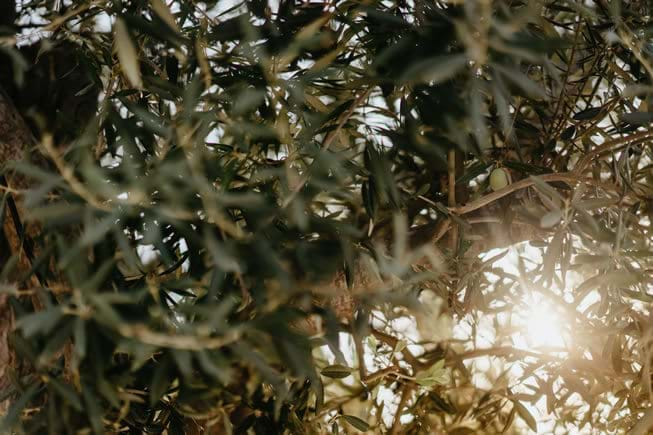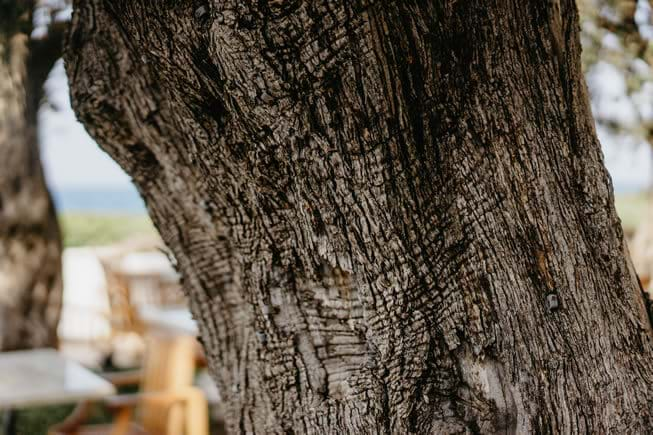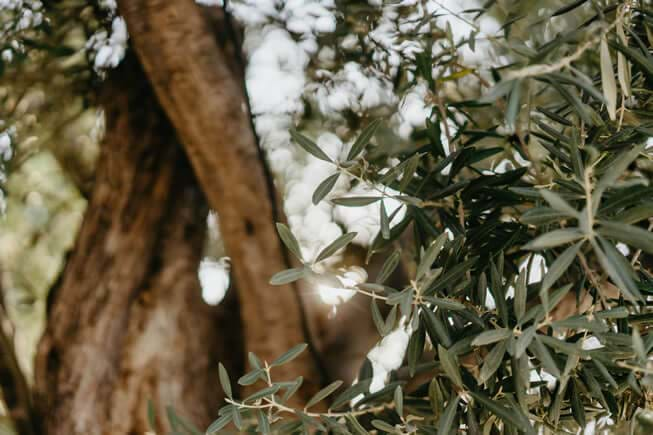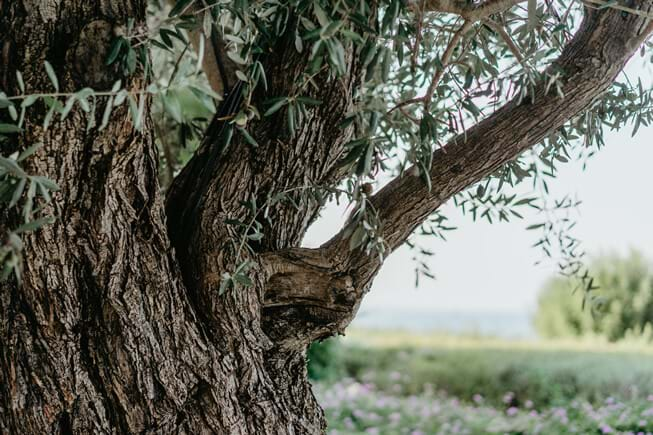Guests often ask about the provenance and production of the olive trees shading the terraces of Amphora and Helios restaurants on Anassa’s ground level. Though many of the trees are over 100 years old, they were all transplanted from a grove in Pafos when the hotel was built over 20 years ago. For transport, the tops of the trees were cut back to the central trunk. Since then, of course, their canopies have filled out and their roots have spread. The trees are nourished with drip irrigation and organic matter. Flowers appear in March or April, and the olives develop over the summer months. In October, the olives are picked. In the first pass, gardeners cull out the biggest olives; those that are turning black can be marinated with salt, while the green olives can be crushed, preserved in saltwater, and served with garlic, lemon juice, coriander, and olive oil as tsakistes. Later, the remaining olives are harvested for making olive oil. Gardeners bring the crates of olives to the local mill, where an automated system screens, washes, and rinses them to remove leaves and dirt before weighing. Then the olives go by conveyer belt to the mill, where they are ground to a paste and further processed to remove stones and impurities; the unwanted sediment is used as biofuel. The resulting olive oil is returned to the hotel for use in the kitchen. You can sit in the shade of our trees as you enjoy the fruit of their harvest.



